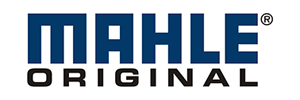The automotive industry is evolving rapidly. One significant aspect of this evolution is the development of auto replacement parts. For car owners, understanding these changes is crucial. In this blog, we will explore the history, evolution, and future trends of car spare parts.
A Brief History of Auto Replacement Parts
Early Beginnings of Replacement Parts
The concept of auto replacement parts dates back to the early 1900s. When mass production began, manufacturers quickly realized that vehicle repairs were essential. Consequently, this marked the beginning of a new industry that would grow alongside automotive advancements.
Impact of Assembly Lines
The introduction of assembly lines revolutionized car manufacturing, enabling efficient production. However, as cars became more accessible, the demand for replacement parts also increased. Furthermore, assembly lines not only accelerated vehicle production but also highlighted the need for durable, high-quality components.
The Evolution of Auto Replacement Parts
Transition from Handcrafted to Automated Production
Initially, many auto parts were manually crafted, which limited their availability and precision. Over time, technological advancements led to automated production. As a result, this shift improved the quality, consistency, and scalability of replacement parts.
E-commerce and Its Influence
With the rise of the internet, consumers gained easier access to auto replacement parts. Moreover, e-commerce platforms provided a convenient way to shop, but they also introduced challenges like counterfeit products. Consequently, quality assurance became a top priority for manufacturers and consumers alike.
Today’s Innovations in Auto Replacement Parts
Revolutionizing Production with 3D Printing
One of the most exciting innovations in the industry is 3D printing. This technology allows manufacturers to create custom car spare parts quickly and cost-effectively. Furthermore, it significantly reduces delivery times, making it easier for car owners to obtain the parts they need.
Emphasis on Sustainability
Sustainability has become a key focus for many manufacturers. For instance, eco-friendly car spare parts made from recycled materials are now more common. This trend not only reduces environmental impact but also resonates with environmentally conscious consumers.
The Impact of Technology on Auto Replacement Parts
Advanced Diagnostic Tools for Precision
Technology has introduced advanced diagnostic tools that help mechanics identify issues with greater accuracy. As a result, repairs are faster and more reliable, reducing vehicle downtime and improving customer satisfaction.
Convenience through Mobile Applications
Mobile apps have transformed the way consumers interact with the auto parts market. For example, these apps enable users to locate, compare, and purchase replacement parts effortlessly. They often include reviews and price comparisons, empowering consumers to make informed decisions.
Benefits of Using Quality Auto Replacement Parts
Enhanced Performance and Longevity
High-quality replacement parts enhance a vehicle’s overall performance, ensuring smoother and more efficient operations. Additionally, they extend the lifespan of the vehicle, reducing long-term maintenance costs.
Safety and Reliability
Using reliable car spare parts minimizes the risk of malfunctions, which contributes to safer driving conditions. Furthermore, many manufacturers also offer warranties, providing peace of mind to consumers.
Future Trends to Watch
Adapting to Electric Vehicles (EVs)
The growing popularity of electric vehicles is reshaping the auto replacement parts industry. Consequently, new and specialized components will be required to meet the unique demands of EVs, prompting innovation among manufacturers.
AI Integration in Manufacturing and Logistics
Artificial intelligence is expected to streamline production and logistics processes. For instance, by minimizing errors and optimizing supply chains, AI will improve efficiency across the industry.
Leveraging Data Analytics for Market Insights
Data analytics will play a pivotal role in understanding consumer preferences. Moreover, by analyzing purchasing trends, manufacturers can better tailor their offerings to meet market demands.
Conclusion
The future of auto replacement parts is filled with promise. From advancements in 3D printing to the rise of sustainable practices, the industry is continually evolving. Transitioning to electric vehicles and integrating AI further highlights the dynamic nature of this field. By staying informed about these trends, both consumers and businesses can embrace the opportunities ahead, ensuring safer, more efficient vehicles and a more sustainable future.






















